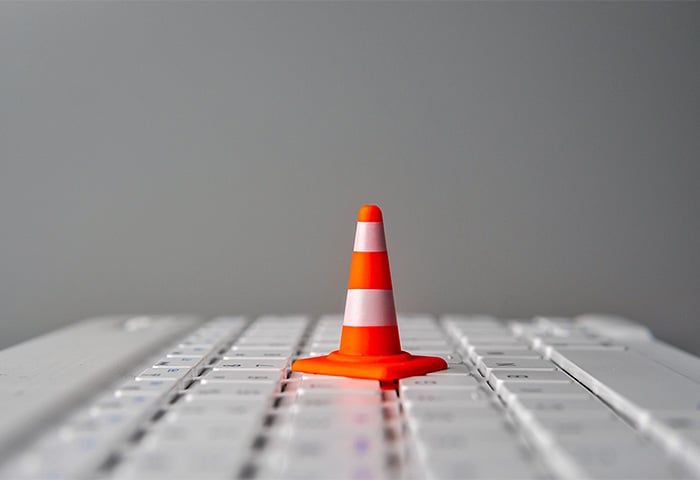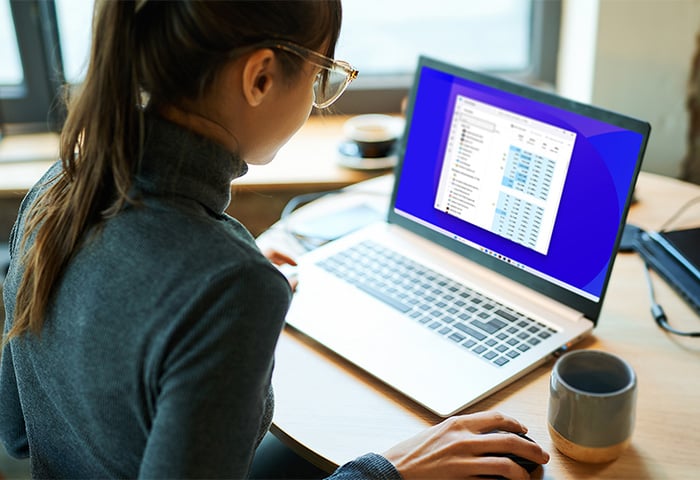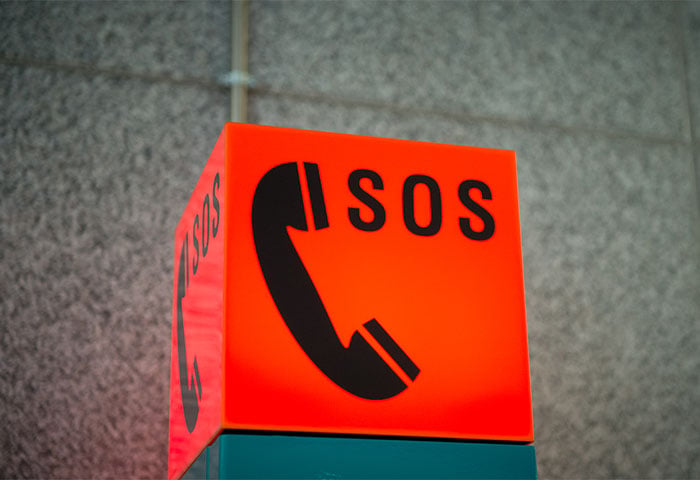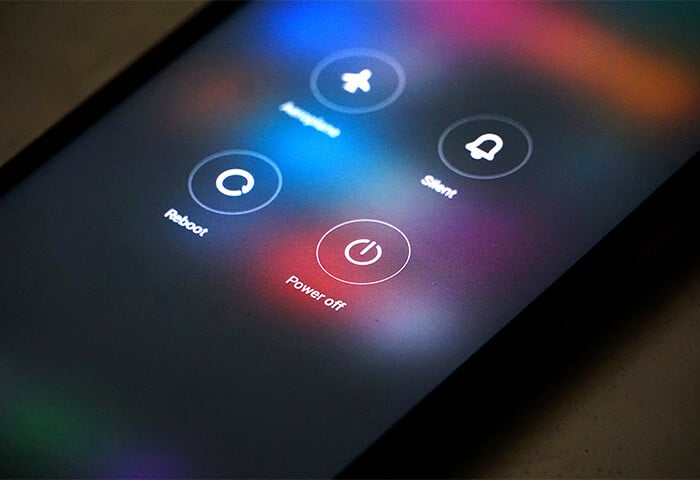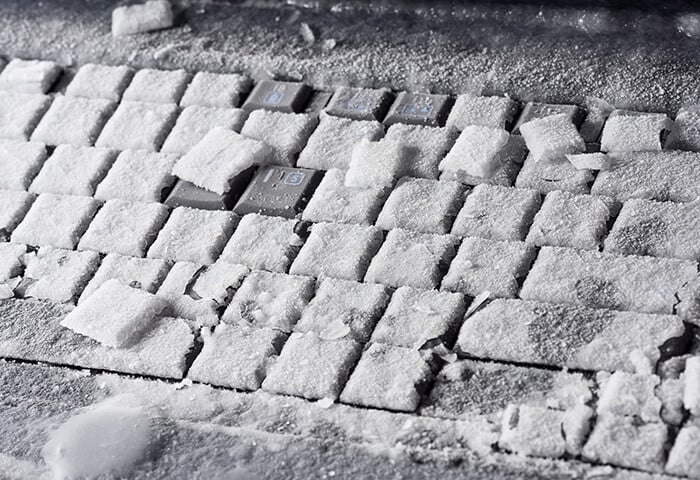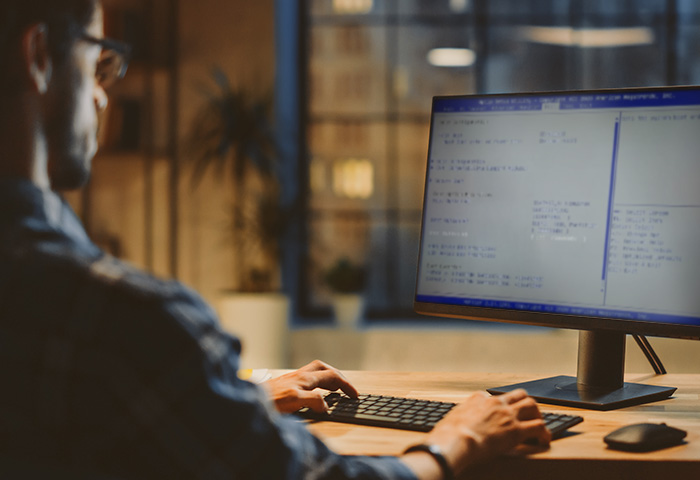Why is my MacBook overheating?
MacBooks can overheat for many reasons: software that strains your processor, too many open browser tabs, and setting your device near external heat sources are common reasons why a Mac can get hot. To avoid MacBook overheating, consider what programs you run and where you place your Mac.
Loud noises or whirring sounds from your Mac computer fan is not necessarily a sign of overheating. When using your computer, it’s normal for your fan to run (and make noise) while it cools down your device — your fan will get louder for more demanding tasks.
What’s not normal is a silent Mac that’s too hot to the touch. That suggests issues with your computer fan that need to be addressed to avoid potentially damaging your hardware.
Most likely causes of an overheating MacBook
Whether your MaBook is running too hot or if you just want to prevent it from doing so, familiarize yourself with these likely causes of an overheating Mac:
 Google Chrome
Google Chrome
Google Chrome may be the world’s most popular browser, but it’s also taxing on your Mac’s system resources and can contribute to overheating. Use macOS’s Safari — it’s lighter, built for Mac, and still touts features like private browsing mode. And check out our list of the best secure and private browsers for other options.
 Too many browser tabs
Too many browser tabs
Too many open browser tabs can cause your device to overheat. It’s a good habit to keep your tab count to under 12, and bookmark sites if you know you need to come back to them later.
 Multitasking
Multitasking
Multitasking between several resource-draining apps can boost productivity — but also cause your Mac’s core temperature to spike. Try running only the apps you need for the task you’re doing. Or run certain apps on another device, like your smartphone.
 External heat sources
External heat sources
A MacBook’s portability is convenient, but that doesn’t mean you should work anywhere. Placing your device near direct sunlight or someplace too hot can raise the internal temperature of your Mac and lead to overheating. Apple recommends an ambient temperature between 50° and 95° F.
 Fan issues
Fan issues
Your computer fan regulates your device’s temperature, so it’s essential that it’s working properly. Fan issues — like a fan making too much noise — can result in overheating. While it's normal for your fan to get louder for more demanding tasks, it shouldn’t sound like an airplane taking off. If your device feels very hot, take note of how your fan is functioning.
 Blocked vents
Blocked vents
Your computer fan will have difficulty regulating your Mac’s temperature if the vents are blocked. Be aware of your vents when using your Mac in bed or on your lap. It’s best to work on a flat surface with plenty of ventilation.
Regular Mac use can also lead to internal dust buildup, so you should clear away obvious obstructive dust from its ports and easily accessible areas. You can also open MacBooks and other devices with basic tools. But before cleaning, do your research so you know how to open it up and clean up its guts.
 Out-of-date apps and OS
Out-of-date apps and OS
Outdated software can overburden your device’s processor — and potentially cause overheating. Regularly updating your apps and operating system fixes software bugs and ensures your programs run with peak efficiency.
How to stop a Mac from overheating
After identifying what’s causing your device to overheat, you can directly address the problem. Here are some strategies for how to cool down your MacBook Pro or other devices based on the likely causes listed above:
Delete unnecessary files
Overtime, your MacBook is bound to accumulate unnecessary files, like blurry photos, junk files, and duplicates. So it’s important to clean up your Mac. Besides cluttering your desktop and hard drive, these pesky files can slow down your Mac and cause performance issues, like overheating.
A proper clean up can do wonders for maintaining a well-running device. Regularly clearing your Mac’s cache, removing bloatware, and even deleting “Other” storage on Mac helps your machine perform at its best.
But manually sifting through all your files can be tedious and inefficient. That’s where AVG TuneUp for Mac comes in — it will scan your entire system and find all those junk files hiding in those hard-to-reach places. Then, it will automatically delete those unnecessary files and photos so that your Mac can stop overheating and start to run smoothly again.
Identify resource-intensive apps
Some apps are more demanding than others on your processor. Although it’s best to run only a few apps at a time, if you’re running many apps, find out which are resource intensive. By minimizing their usage, you can multitask without straining your processor — and also help speed up your Mac.
You can use macOS’s Activity Monitor to identify which apps are using the most resources. Here’s how:
-
Click the Finder app on your doc. Then click Applications and choose the Utilities folder.

-
Select Activity Monitor.
-
In the Activity Monitor, click the CPU tab to see your apps listed according to how much of your computer processor’s resources they use.

TIP: In the top right of the Activity Monitor window, you can use the Stop button to automatically close the most resource-heavy app.
Limit open tabs on Chrome and other browsers
Too many browser tabs can cause your Mac to overheat — especially if you’re using Google Chrome. Just like managing your apps, limiting the number of open browser tabs can help you prevent Mac heat issues.
Manage graphics settings (GPU)
Your graphics processing unit (GPU) handles many of the visual tasks on your Mac device. This includes 3D gaming, rendering video, and graphics editing software like Photoshop. If these tasks push your GPU too hard, you may experience overheating.
Other than stopping tasks that sap your GPU, there isn’t a direct solution to managing this issue. Although it’s normal for your GPU to get hot when working, check your GPU’s temperature if you suspect it’s too hot.
Manage Battery Settings
Some Macs are equipped with an extra GPU to handle more demanding tasks — but it’s also more demanding on your system and battery. If your extra GPU is being used for relatively simple tasks like browsing, your device may overheat.
Here’s how to keep your MacBook Pro cool by adjusting its GPU settings:
-
In your dock, click the System Preference icon, then select Battery.

-
In the Battery window, tick Automatic Graphics Switching.

That’s it. Your GPU will now automatically adjust its settings based on the processing requirements of your tasks.
Test the fans
Your computer fan is an essential component of your Mac device, regulating your device’s internal temperature to prevent overheating. If you think your MacBook Pro fan is not working properly, you can test it with Apple Diagnostics.
Here’s how to run Apple Diagnostics:
-
Restart your Mac. While rebooting, hold down the D key to begin a hardware scan.
For newer Macs with M1 chips: Hold down the Power button until you see startup options, then press Command + D.
-
Once the scan is complete, view the results on your screen. Error codes beginning with “PPF” indicate cooling fan issues.
-
If you have any PPF error codes, get your fan fixed at an authorized Apple service provider.
Reset the SMC
The System Management Controller (SMC) controls your Mac’s physical parts, including the cooling fan. Resetting the SMC is a simple process and may help with overheating issues caused by a malfunctioning fan.
Here’s how to reset the SMC:
-
Shut down your Mac device.
-
Press and hold Shift + Option + Control + Power for 10 seconds.
-
Power your Mac back up.
That’s it. Your SMC has been reset. Now listen to your cooling fan to see if anything has changed.
Monitor Usage
There are also physical factors that can cause your Mac to overheat. Being mindful of where you work is one way to stop your Mac from overheating. Working on a well-ventilated, flat surface is ideal for your Mac.
Also avoid direct sunlight, as it can raise your Mac’s temperature. And if you must use your Mac on your lap or in bed, be careful not to block the vents that help regulate your device’s internal temperature.
Clear away dust
Over time, your Mac may accumulate dust that could affect your computer fan. Opening your Mac and clearing away any dust buildup helps your fan function optimally, and helps prevent overheating.
Here’s how to clear dust from your Mac:
-
Power off your Mac.
-
On the bottom of your MacBook, remove the screws with a small pentalobe (five-pointed star) screwdriver. Then carefully remove the bottom cover.
-
Using a can of compressed air or a lint-free cloth, blow or wipe away any dust buildup. Pay attention to the actual fan and the vents along the back edge of your Mac — clear the passages for maximum airflow.
-
Carefully replace the bottom cover and screws.
Now your MacBook can breathe. Physically clean your computer regularly to help maintain proper functionality.
Check for updates
Keeping your software updated can help you avoid overheating issues. Updates to macOS fix bugs and help apps run more efficiently. To ensure the best performance on your Mac, always install the latest firmware updates.
Check for Malware
Contrary to popular belief, Macs can get viruses and other forms of malware. Even uncommon threats like Mac ransomware attacks are on the rise. Certain malware threats can even hijack your device for cryptomining and other resource-heavy operations that could overheat your device.
It’s not easy to scan every file to spot malware — a malware scan and removal tool makes it much easier. For complete protection, use AVG AntiVirus for Mac — an extraordinarily comprehensive and totally free security app that will ensure malware never gets close to your MacBook.
Maintain your Mac with AVG TuneUp
Regular maintenance is key to a well-running Mac. Problems like overheating can be avoided if you take care of your device.
But even with careful maintenance, your Mac will inevitably accumulate unnecessary files. If left unmanaged, these files will take a toll on your device — slowing it down and causing it to overheat.
AVG TuneUp for Mac was specially designed by Mac optimization experts to clear away the clutter. It will scan your Mac automatically to remove hidden junk and duplicate files — and it will also help declutter your photo library by removing duplicates and blurry pics. Get AVG TuneUp and keep your Mac running cool and clutter-free.
FAQs
How do I cool down my Mac?
To cool down your Mac and prevent overheating, you can try the following steps:
- Delete unnecessary files: Delete all unnecessary files — cleaning up your Mac is essential to maintaining its performance.
- Close resource-intensive apps: Quit any programs that are putting a heavy load on your Mac's processor. This will reduce the strain on your system and help it cool down.
- Limit the number of browser tabs open: Having too many tabs open in your web browser can consume a significant amount of system resources. Close unnecessary tabs to reduce the strain on your Mac.
- Place your Mac on a hard, flat surface: Ensure that your Mac is placed on a solid, flat surface that allows proper airflow. Avoid using it on soft surfaces like beds or couches, as that can block ventilation and lead to overheating.
- Keep your Mac's vents clear: Regularly clean the vents and fans of your Mac to remove any dust or debris that might be obstructing airflow. Use compressed air or a soft brush to gently clean these areas.
- Use a cooling pad or external fan: Use a cooling pad or external fan specifically designed for laptops to keep your Mac cooler during intensive tasks.
- Adjust energy-saving settings: Go to System Preferences > Energy Saver and adjust the settings to optimize energy consumption and prevent excessive heat generation.
- Reset SMC and PRAM: In some cases, resetting the System Management Controller (SMC) and Parameter RAM (PRAM) on your Mac can help resolve temperature-related issues. Instructions for resetting these can be found on Apple's support website.
- Update your software: Make sure your macOS and apps are updated. Software updates often include bug fixes and optimizations that can improve performance and reduce heat generation.
How to check Mac temperature?
You can check your Mac’s temperature using third-party apps. Fanny Widget for macOS is free and monitors the temperature of your CPU and GPU as well as your system fans.
At which temperature does a Mac overheat?
The temperature at which a Mac can overheat varies depending on the model, usage, and environmental factors. But generally, a temperature above 80°C (176°F) is too hot for a MacBook.





